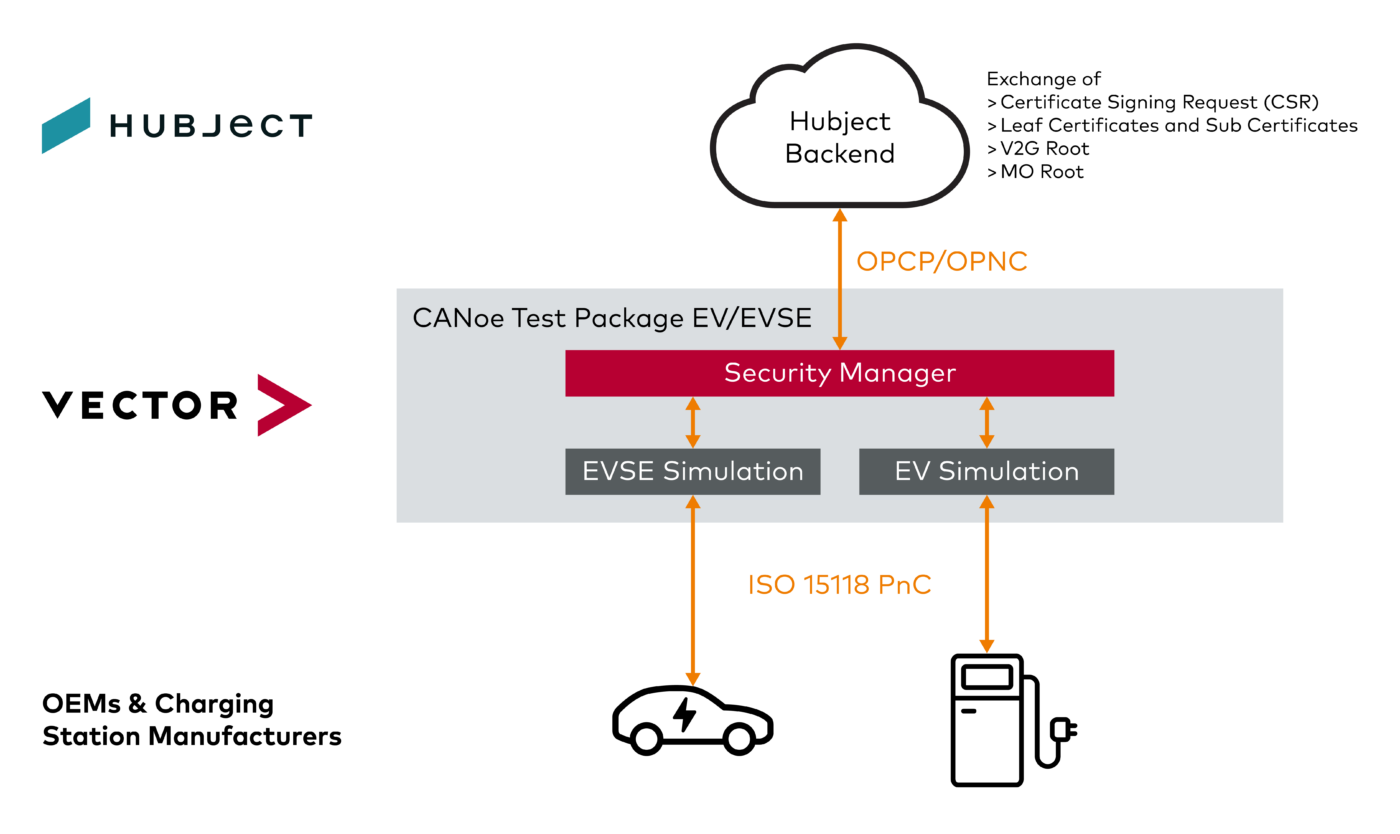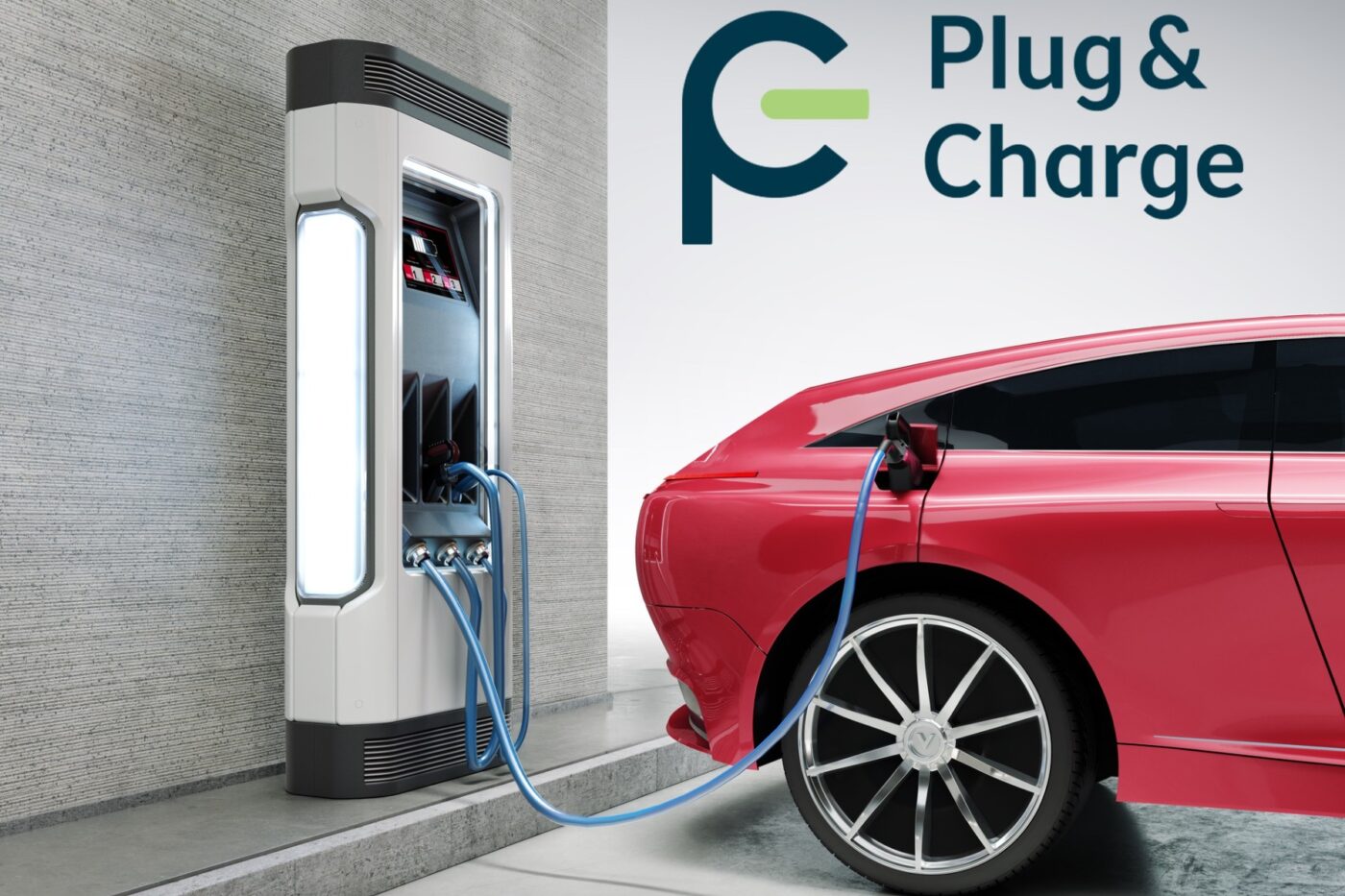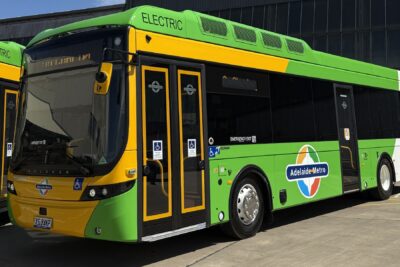Vector and Hubject work together on Plug & Charge
“Through this collaboration, OEMs and charging station manufacturers can now obtain the Hubject QA (Pre-Production) and Production Certificates via the Vector Security Manager,” Vector states in its press release. The latter is the link between the Vector tools and the OEM-specific security implementations and can be used to standardise safety functions.
The company further explains that Hubject QA and production certificates are needed for testing EVs and Electric Vehicle Supply Equipment (EVSE) with the CANoe Test Package EV or CANoe Test Package EVSE from Vector (see graphic below). The integration of the Security Manager also ensures that electric vehicles and charging stations fulfil the ISO 15118 standard, which ensures the bidirectional communication between the EV and the charger.
“We are excited to work closely with Hubject to push the boundaries of Plug & Charge technology,” says Phanuel Hieber, Product Manager at Vector.
“This partnership will provide customers with the tools they need to ensure their EVs and EVSEs are fully compatible and ready for the future,” said Omar Hasan, Project Manager at Hubject, adding: “This technical collaboration empowers OEMs and EVSE manufacturers to accelerate and enhance the reliability of Plug & Charge integration, paving the way for future advancements.”

Moreover, Vector announced that its software vCharM was one of the first Charging Station Management Systems (CSMS) to successfully test Open Charge Point Protocol OCPP 2.1 against various charging station manufacturers. The latter allows for standardised and interoperable communication between EV chargers and CSMS. It also enables functions such as bidirectional charging, dynamic tariffs and real-time cost transparency.
The tests took place at the Plugfest organised by the Open Charge Alliance (OCA) on the Vector Campus in Stuttgart, Germany. The company points out that the protocol also brings the industry closer to “grid-friendly” charging, as peak loads can be avoided and renewable energy is favoured to ensure grid stability.
“By implementing the latest OCPP 2.1 standard in vCharM, charging station operators will not only be able to work more efficiently and save costs in future, but also potentially generate additional income and contribute to the stability and sustainability of the electricity grid,” Vector concludes.
presseagentur.com (Hubject), presseagentur.com (protocol)





0 Comments